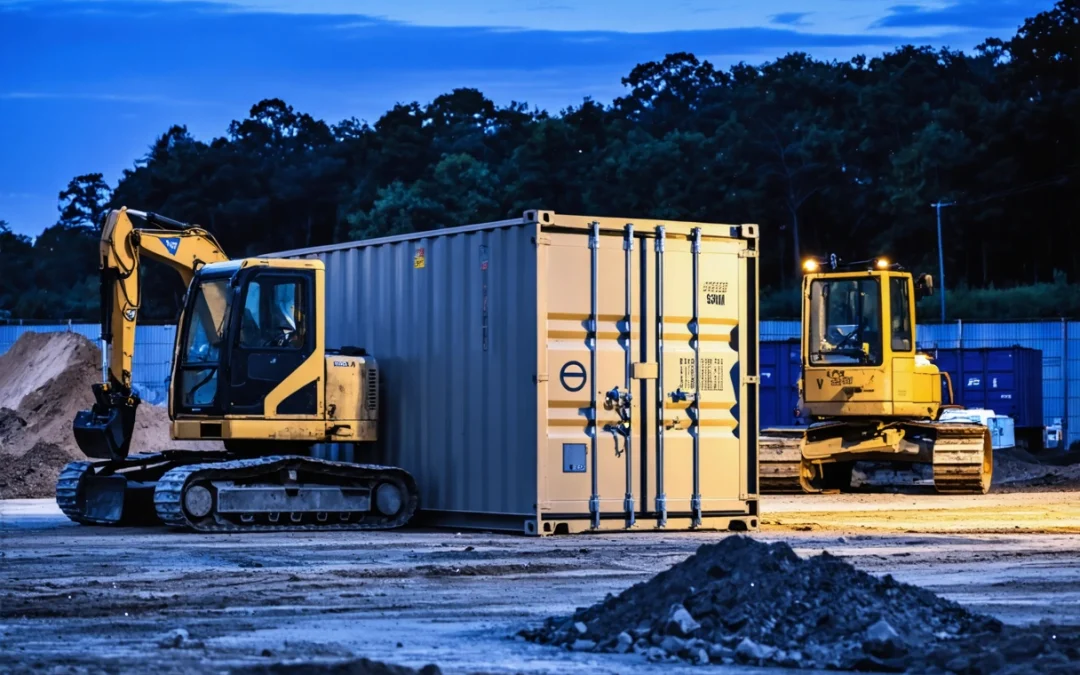Protect Your Assets: How On-site Storage Containers Can Safeguard Construction Equipment
Construction sites are bustling environments filled with expensive equipment, valuable tools, and essential materials. The chaotic nature of these sites, coupled with their often remote or unsecured locations, makes them prime targets for theft, vandalism, and weather-related damage. Protecting these assets is crucial not only for the financial health of a construction company but also for the smooth progression of projects. One of the most effective ways to ensure the security and longevity of construction equipment is the use of on-site storage containers. In this comprehensive guide, we will explore why on-site storage containers are indispensable for modern construction sites, how they function as protective barriers, and what best practices can maximize their effectiveness.
By delving into the various threats facing construction assets, the unique features of storage containers, and the broader impact on project management and cost control, this article aims to provide a thorough understanding of asset protection in the construction industry. Whether you are a project manager, contractor, or site supervisor, this guide will arm you with the knowledge needed to make informed decisions about safeguarding your valuable equipment.
Understanding the Risks to Construction Equipment
Before exploring solutions, it is essential to understand the myriad threats that construction equipment faces on-site. Construction equipment represents a significant investment, with some machinery and tool sets costing tens or even hundreds of thousands of dollars. The range of risks includes theft, vandalism, accidental damage, and environmental hazards.
Theft is one of the most prevalent challenges. According to the National Insurance Crime Bureau, heavy equipment thefts increase annually, with millions of dollars lost each year. These losses can cripple a project’s budget and timeline. Other risks include exposure to harsh weather conditions, which can lead to rust, corrosion, and mechanical failure, as well as the potential for unauthorized use or misplacement of assets.
Given the frequency and cost of these incidents, implementing robust security and protection measures is not simply an option but a necessity for any responsible construction operation.
The Role of On-site Storage Containers in Asset Protection
On-site storage containers, sometimes referred to as shipping containers or portable storage units, offer a versatile and robust solution for the protection of construction equipment. They are designed to withstand severe weather, resist forced entry, and provide organized storage for a wide variety of assets. These containers are constructed from heavy-duty steel and can be customized with advanced locking mechanisms, shelving, and climate control features.
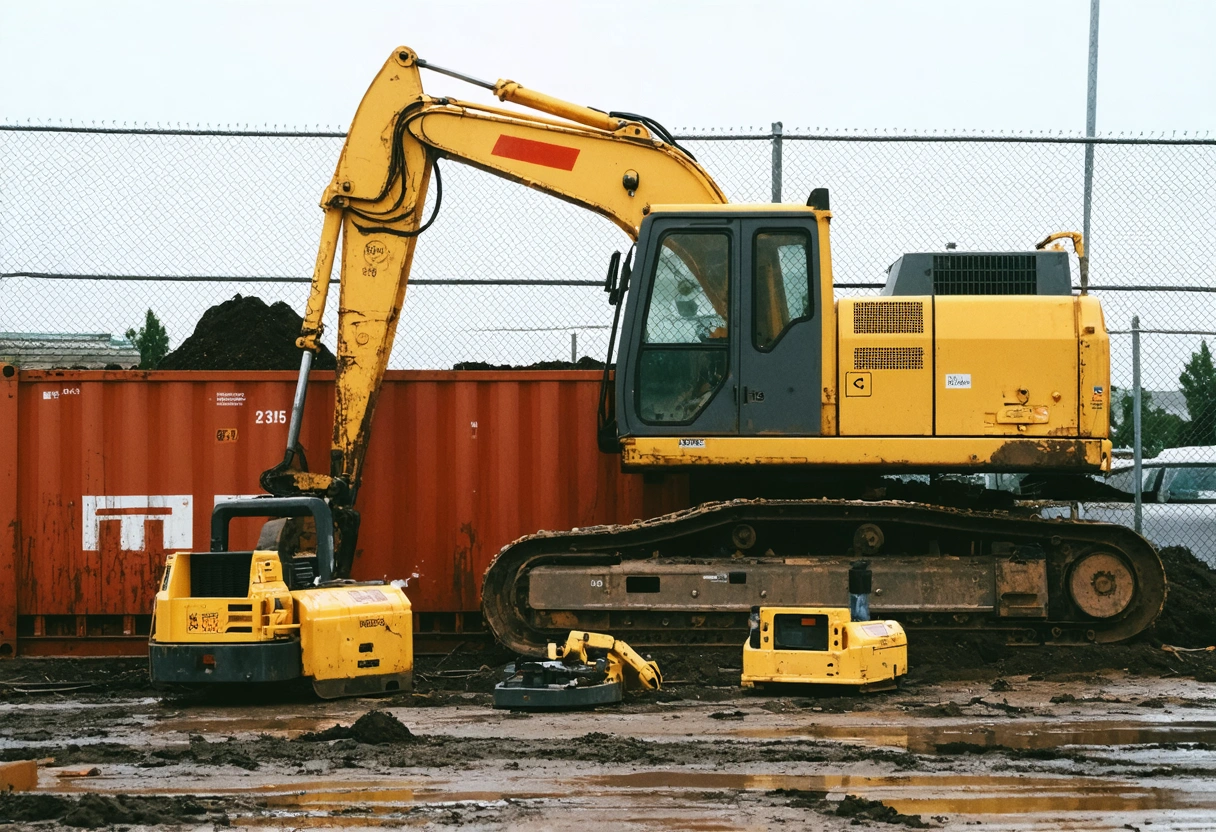
One of the key advantages of using on-site storage containers is their mobility and flexibility. Containers can be delivered and placed precisely where they are needed most. This allows project managers to optimize site layout, enhance workflow, and reduce the time spent searching for tools or equipment. In addition, the modular nature of storage containers means they can be relocated or repurposed as project needs evolve, offering both short-term and long-term benefits.
Key Benefits of On-site Storage Containers for Construction Sites
On-site storage containers provide an array of advantages that go beyond simple storage. Here are some of the most compelling benefits for construction professionals seeking to protect their assets:
1. Enhanced Security Against Theft and Vandalism
The primary reason many construction companies invest in on-site storage containers is to combat theft and vandalism. These containers are engineered with tamper-resistant features, including reinforced steel walls, high-security locks, and sometimes even alarm systems. This makes unauthorized access significantly more difficult compared to traditional storage sheds or open-air storage solutions.
Construction sites are often left unattended overnight or during weekends, which is when most thefts occur. By storing valuable equipment in containers, you create a physical barrier that deters would-be thieves and vandals. According to data published by ConstructConnect, implementing secure storage solutions can reduce theft-related losses by up to 50 percent.
2. Protection from Weather and Environmental Hazards
Construction equipment is built to be sturdy, but prolonged exposure to the elements can degrade even the toughest machinery. Rain, snow, dust, and ultraviolet rays can all contribute to rust, corrosion, and wear over time. On-site storage containers provide a weatherproof environment, shielding assets from rain, humidity, and temperature extremes.
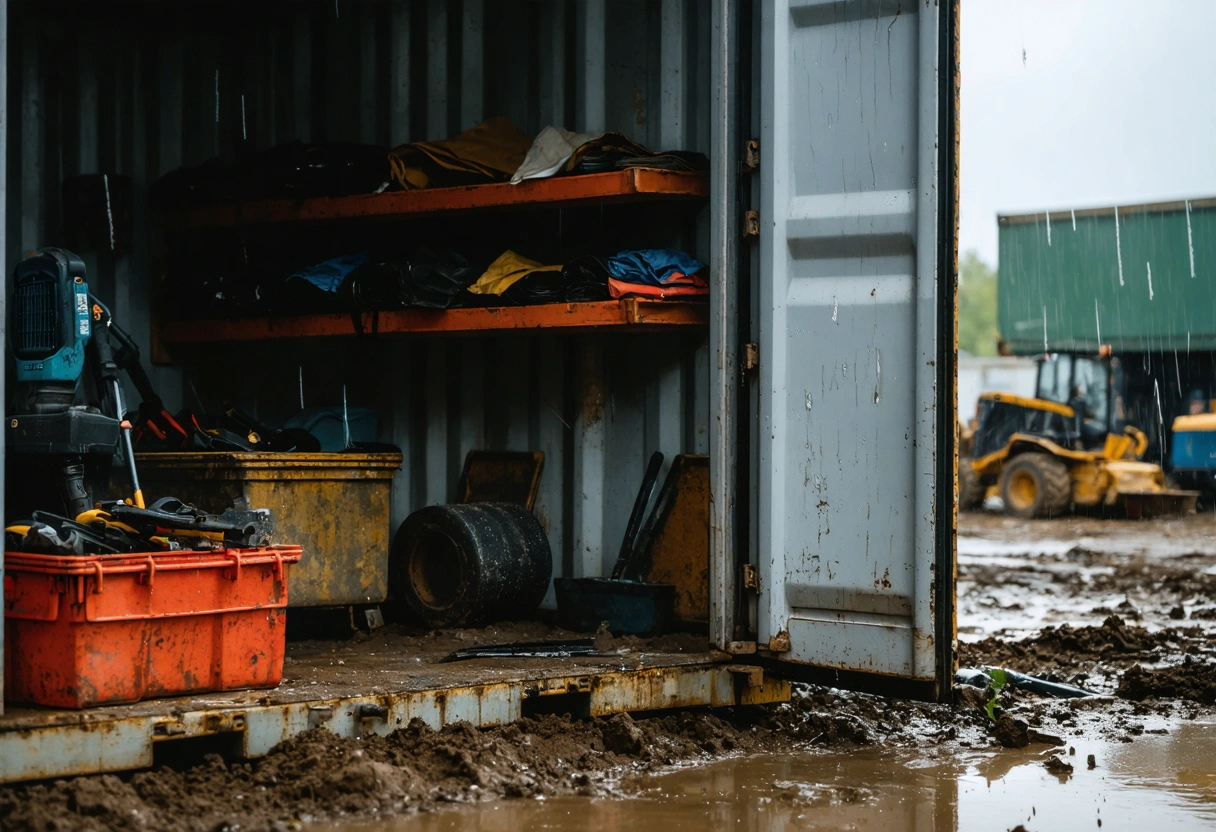
For sites located in areas with unpredictable weather patterns, this protection can be invaluable. Equipment stored inside containers is less likely to suffer damage, which means lower maintenance costs and longer operational life. Additionally, containers can be outfitted with insulation or climate control systems to protect sensitive tools and electronics from extreme heat or cold.
3. Improved Organization and Inventory Management
Beyond security and protection from the elements, on-site storage containers facilitate better organization on construction sites. Tools and equipment can be categorized, labeled, and stored in designated areas within the container, reducing the likelihood of loss or misplacement. This organizational benefit translates into increased efficiency, as workers spend less time searching for tools and more time working on the project.
Efficient inventory management also means you can quickly identify missing items, conduct audits, and track usage patterns. This is especially important on larger projects with multiple teams or subcontractors accessing shared resources. Effective organization can also support compliance with site safety regulations, as outlined by the Occupational Safety and Health Administration’s Safe + Sound Campaign.
4. Cost Savings and Insurance Benefits
Every theft, loss, or equipment malfunction due to environmental exposure comes with a price tag. By reducing these incidents, on-site storage containers offer significant cost savings over the duration of a project. Lower rates of loss and damage translate into fewer emergency purchases and repair bills. Furthermore, many insurance providers offer premium discounts for construction sites that implement secure storage solutions, as these reduce the overall risk profile.
In the unfortunate event of a loss, having a well-documented storage system can also expedite insurance claims, as the contents and security measures are easier to verify and substantiate. This means less downtime and faster recovery in case of an incident.
5. Flexibility and Scalability
On-site storage containers are available in a variety of sizes and configurations, from compact 10-foot units to expansive 40-foot containers. This flexibility allows construction managers to scale storage capacity according to the needs of each project phase. Whether you are storing hand tools, large equipment, or hazardous materials, there is a container solution that fits the requirement.
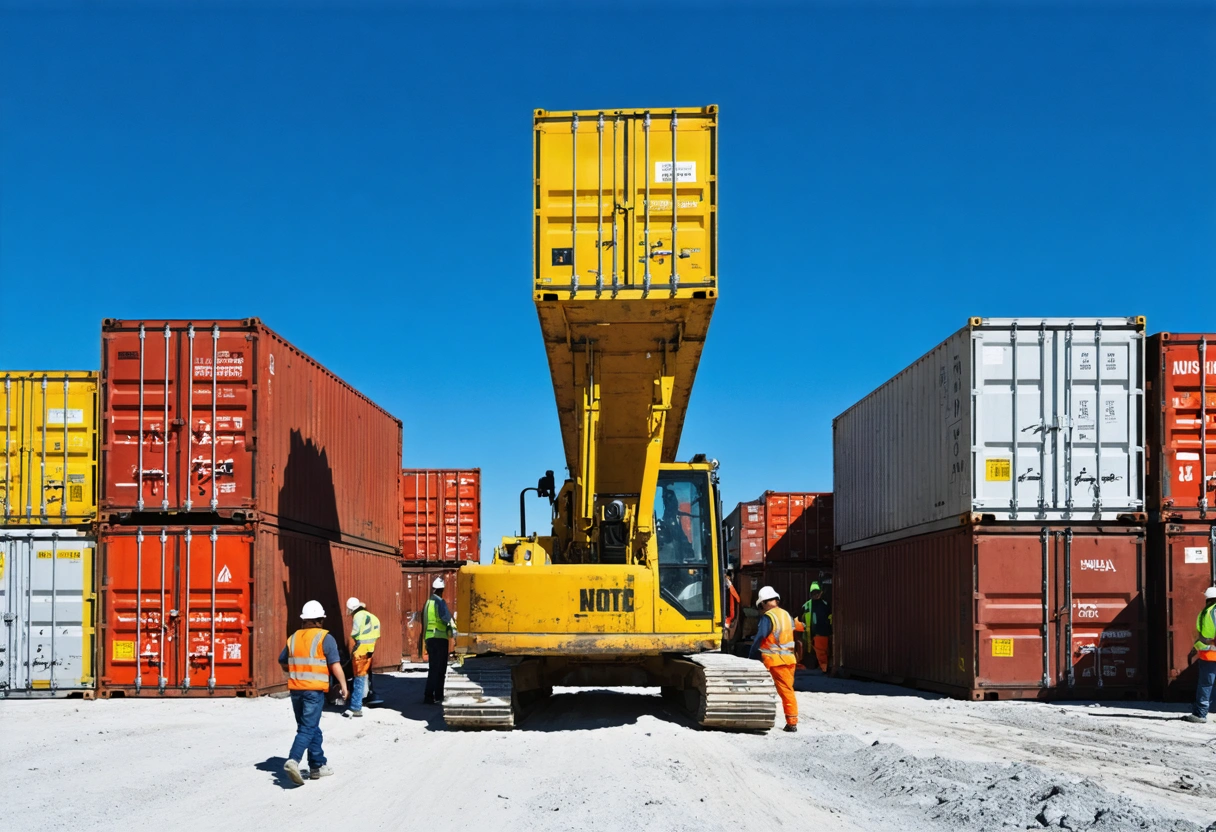
Containers can also be stacked, linked, or compartmentalized to create custom storage solutions. This adaptability is particularly valuable for projects with changing priorities or timelines, as storage can be increased or decreased as necessary without significant investment in new infrastructure.
Best Practices for Using On-site Storage Containers on Construction Sites
While on-site storage containers offer substantial benefits, their effectiveness depends on proper implementation and usage. Here are some best practices for maximizing the protective capabilities of storage containers on construction sites:
Strategic Placement of Storage Containers
The location of your storage containers is critical to both security and efficiency. Containers should be placed in well-lit, visible areas whenever possible, ideally within sightlines of security cameras or site offices. Avoid placing containers in isolated or hidden corners, as these areas are more susceptible to unauthorized access.
For large sites, consider deploying multiple containers at strategic points to reduce the distance workers must travel to access tools and equipment. This not only improves workflow but also ensures that no single container becomes a bottleneck or high-value target for theft.
Investing in Advanced Security Features
Standard containers offer a high level of protection, but additional security features can further safeguard your assets. High-security padlocks, lock boxes, reinforced doors, and motion-activated lighting or alarms can greatly enhance deterrence. For particularly valuable equipment, consider integrating smart security systems that allow remote monitoring and alerts via smartphone or web interface.
Some companies also employ GPS tracking devices on containers, providing real-time location data in the event of unauthorized movement. These added layers of security are especially important in high-risk areas or for projects with a history of theft.
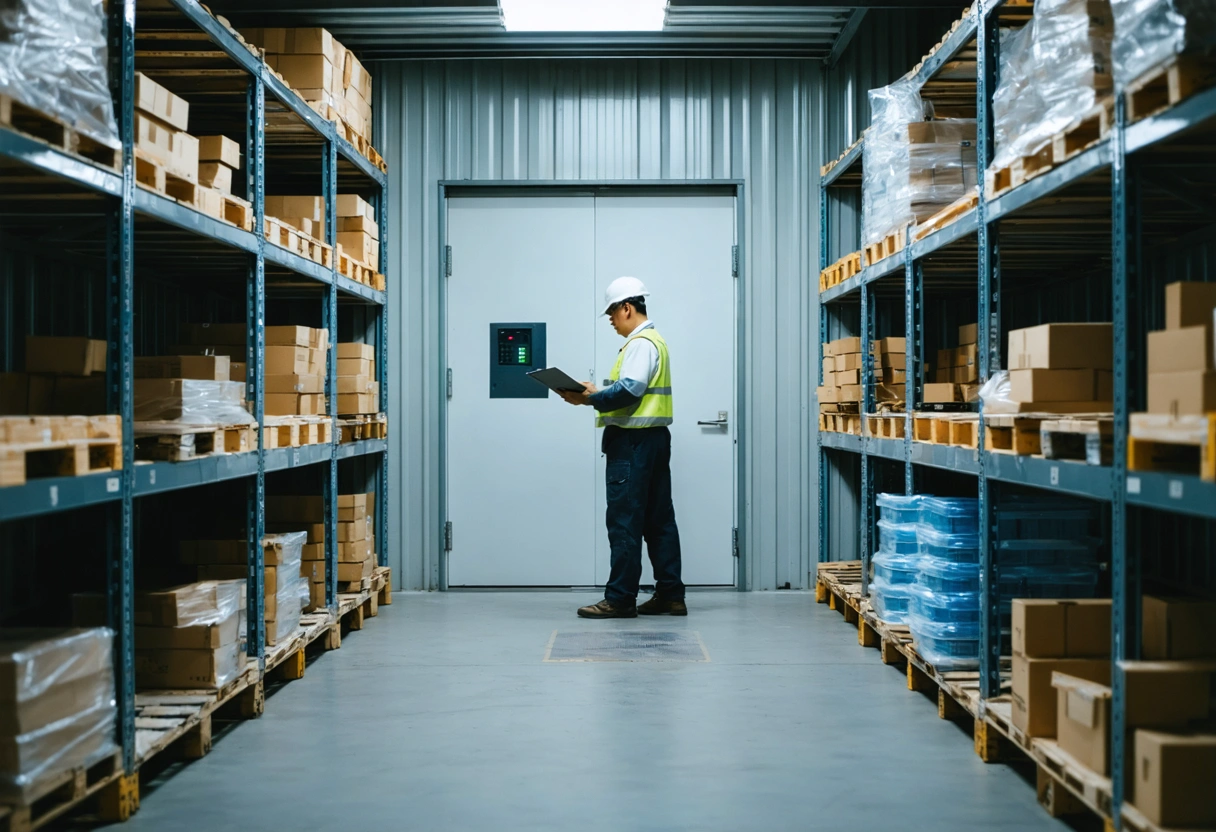
Establishing Access Controls and Recordkeeping
Limiting and monitoring access to storage containers is essential for both security and accountability. Assign access privileges only to trusted personnel and maintain a log of entries and exits. This can be accomplished with traditional sign-in sheets or more advanced electronic access systems, such as key cards or biometric locks.
Regular audits and inventory checks should be conducted to ensure that equipment is accounted for and that security measures are being followed consistently. This level of oversight not only deters internal theft but also ensures compliance with industry best practices, as outlined in the NIOSH Construction Safety and Health topic page.
Maintaining Containers and Contents
Like any piece of equipment, storage containers require periodic inspection and maintenance. Check for signs of rust, structural damage, or malfunctioning locks on a regular schedule. Ensure that doors open and close smoothly and that any climate control or lighting systems are fully operational.
Inside the container, keep walkways clear and avoid overloading shelves or racks. Label shelves and storage bins clearly, and use vertical space efficiently to maximize capacity. Well-maintained containers are not only more secure but also contribute to a safer and more organized site environment.
Real-world Examples and Case Studies
Many construction companies have experienced the transformative impact of on-site storage containers firsthand. For example, a mid-sized contractor in the Midwest saw a dramatic reduction in theft after deploying reinforced storage containers at multiple sites. Previously, this company had lost several thousand dollars in equipment each quarter. After implementing containerized storage, theft incidents dropped to near zero, while project schedules improved due to faster access to tools.

In another instance, a large-scale infrastructure project in a coastal region faced frequent delays due to equipment damage from salt air and heavy storms. By moving critical machinery into weatherproof containers, the project team extended the usable lifespan of their assets and avoided costly repairs and replacements. This not only protected company resources but also ensured compliance with environmental regulations regarding site runoff and contamination.
These examples highlight the versatility and effectiveness of on-site storage containers in a variety of construction settings. More case studies and data on equipment protection can be found in resources such as the Construction Executive’s guide to theft prevention.
Integrating On-site Storage Containers into Comprehensive Security Plans
While storage containers are a powerful tool for asset protection, they should be integrated into a broader security strategy for maximum impact. Physical barriers, surveillance systems, employee training, and clear procedures all play a role in reducing risk on construction sites. Regularly review and update your security plan to address new threats or vulnerabilities as they arise.
Collaboration with local law enforcement, security consultants, and insurance providers can also yield valuable insights and resources. Some jurisdictions offer crime prevention programs tailored specifically to the construction industry, which can supplement your existing security measures. Explore additional guidelines and resources provided by industry organizations such as the Associated General Contractors’ best practices for construction site security.
Investing in Security for Long-term Success
The protection of construction equipment is a critical component of project management and profitability in the construction industry. On-site storage containers offer a practical, scalable, and highly effective solution for safeguarding valuable assets against theft, vandalism, and environmental damage. By enhancing site security, improving organization, and supporting compliance with industry standards, storage containers contribute to smoother operations and greater peace of mind for construction professionals.
As the construction landscape continues to evolve, the need for robust asset protection measures will only grow. By adopting on-site storage containers and following best practices for their use, companies can reduce risk, lower costs, and ensure the successful completion of projects. Take proactive steps today to secure your construction site and protect the investments that drive your business’s future.
Need help with Protect Your Assets: How On-site Storage Containers Can Safeguard Construction Equipment?


